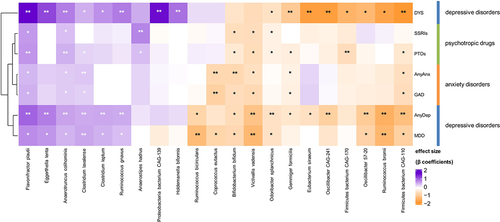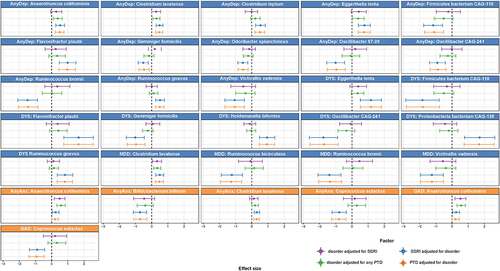Figures & data
Figure 1. Schematic of study design.

Figure 2. Bacterial species associated with internalizing disorders and psychotropic drugs.

Figure 3. Bacterial species associated with internalizing disorders, adjusted for the use of SSRIs or of any PTDs and vice versa.

Figure 4. Bacterial gut – brain modules associated with internalizing disorders and psychotropic drugs.

Figure 5. Bacterial gut – brain modules associated with internalizing disorders, adjusted for the use of SSRIs or of any PTDs and vice versa.

Supplemental Material
Download Zip (2.6 MB)Data availability statement
Scripts used for data analysis can be found at:
https://github.com/GRONINGEN-MICROBIOME-CENTRE/DMP and https://github.com/GRONINGEN-MICROBIOME-CENTRE/DMP_MentalHeath
